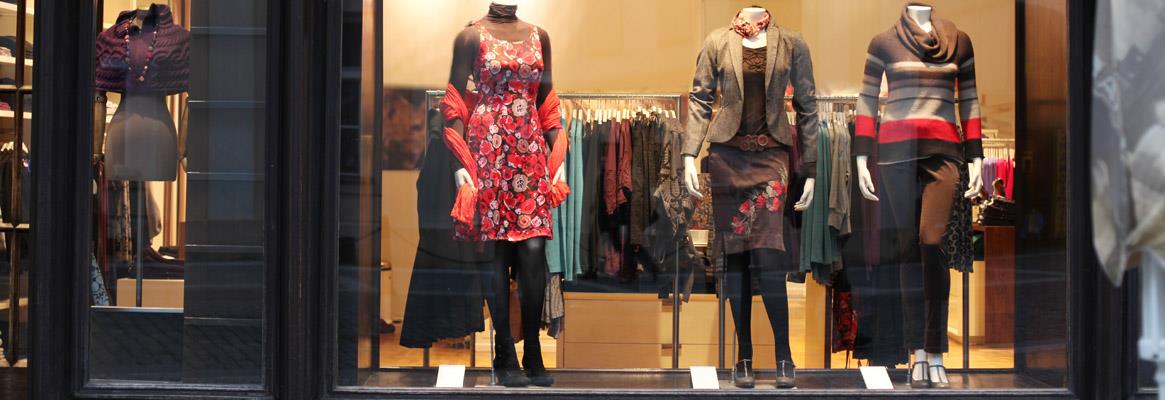Visual merchandising is today at the core of every brand's vision strategy. Yet, there is an acute shortfall of skilled and trained visual merchandisers in India with most of the workforce having learnt the process either on the job or on the floor, writes Deepak Chakravarty.
Indian retail has seen a revolution in the last decade with all major global brands playing to the tunes of the Indian consumer and trying hard to grab eyeballs. The story of retail in India during the last decade has been nothing less than a revolution shaped by world class designs, quality investment and engaging stakeholders. The remarkable growth in the Indian economy over the last few years, is considerably driven by the retail industry.
Since organised retail is an emerging sector in India, experienced retail talent is somewhat scarce. Globally, retail has a high turnover of greater than 40 per cent, with even the larger and more established retailers facing attrition rates, which can be higher than in other sectors. The talent crunch in retail is exacerbated by the lack of requisite training infrastructure, and visual merchandising (VM) is one such crucial areas.
The Visual element
Visual merchandising is one of the key pillars of retail, impacting retail KPIs and plays an important role in influencing consumer experience. VM takes the customer from the retail display to the cash desk. The presentation of a store and its merchandise in ways that will attract the attention of potential customers and motivate them to make purchases is crucial. It is the art of displaying merchandise to enhance its sales appeal which makes the difference. The purpose is to attract, engage and motivate the customer towards making a purchase. Many scientific studies and researches have proven that VM should be considered as an important component of a strategic marketing plan in support of sales increase and positive store/company image.
VM helps in maintaining the overall image of a retail store in the consumers' mind. Brands especially place more importance on VM to differentiate their offerings from competitors. Brands want to project the best face of the company, and a good selection of the VM with a detailed consideration of proper expressions is vital. Windows play a crucial role in projecting a brand's image, and as per a global study, consumers spend only three seconds in front of a window. The overall concept has to appeal within this short time for a customer to do the walk-in. Window displays play a decisive role in affecting store entry decisions as they are a very important information connect for consumers, and are pivotal in increasing footfalls leading to increased conversions.
Moreover, VM impacts the entire consumer experience through affective pleasure and sensory aspects including the emotional feeling of consumers, such as responses to temperature and sound. Creating a great shopping experience for customers is one way of attracting them to the stores and remaining competitive in the industry. Good VM and store planning play an important part in shaping the consumer's behaviour towards the brand. The importance of VM is to provide the right product available to the right customers at the right time. The longer a customer remains in the store the more the chances that he or she will buy. And the amount of time a shopper spends in the store depends on how conducive and enjoyable the experience is.
The People element
VM has taken centrestage in all retail brands' key vision, and thus is very important in the overall scheme of things. There is an acute shortfall of skilled and trained visual merchandisers in India and most of the workforce has learnt it on the job and on the floor.
Very few institutes in India impart quality education in VM. Most of them teach VM as a module in their regular programmes of design and management like National Institute of Fashion Technology (NIFT), Pearl Academy of Fashion, to name a few. The undergraduate programme of fashion communication at NIFT has VM as a major with more detailed inputs. Students passing out from this stream are absorbed by brands for the entry-level VM jobs. Most of the students don't take up the front-end VM profiles at the store level and aspire to join the brand VM teams. This creates a shortfall of trained visual merchandisers at the store level which is very critical.
It's high time that full-time and part-time courses in VM are introduced to cater to the growing demand in the country. The curriculum has to be revamped as well, keeping in mind that the Indian retail scenario is ever-evolving and challenging. Inputs on materials, new technologies and digital interfaces need to be included to prepare the students for the next level of retail. Internships and projects on live projects needs to be sponsored by brands to impart hands on experience to the students apart from the class room teaching.
VM is a great employment generating stream and with retail growth reaching its peak, it is high time that its recognised as key retail stimuli.
About the author: Deepak Chakravarty is head of visual merchandising and retail marketing at Bata India Ltd. He is a design graduate from NIFT, New Delhi.








Comments